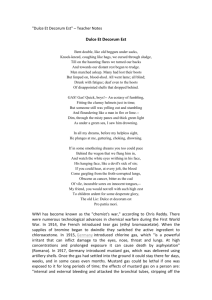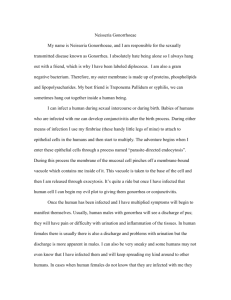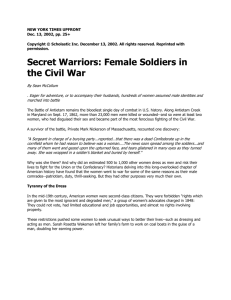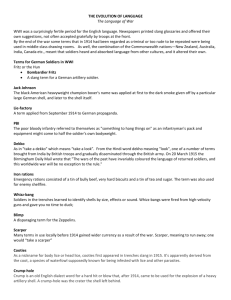Mustard Gas during World War 1
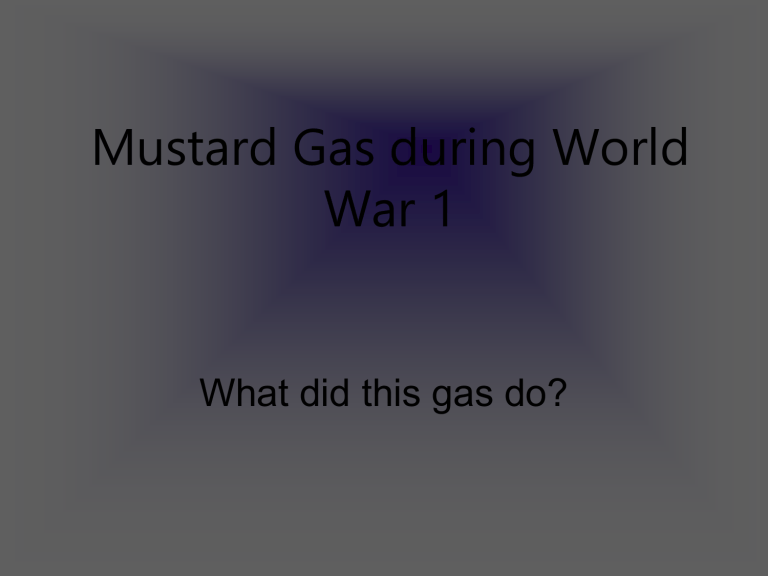
Mustard Gas during World
War 1
What did this gas do?
Mustard Gas
• A toxic war gas with sulfide based compounds that raises blisters and attacks the eyes and lungs.
• There is no known antidote to mustard gas
• It is described with the formula
(ClCH2CH2)2S
• Doesn’t usually kill victims
• Less than 5% of victims died in World War 1
short-term symptoms
• causes skin to become red and itchy, later forming yellowish blisters
• burns skin
• makes eyes itchy and irritated, sometimes causing blindness for up to 10 days
• can cause vomiting, nausea, diarrhea, and a fever
Long-term health effects
• usually causes second-degree or third-degree burns, excessive skin burning can sometimes be fatal
• repeated respiratory infections, can be fatal
• excessive eye exposure can lead to permanent blindness
• too much exposure can increase the risk of getting lung or respiratory cancer
Effects on soldiers
• It infected many soldiers during World War 1, stopping them from being in action during the war, which decreased numbers greatly.
• Mustard gas would stick in the air for several days, and would infect any soldier that would pass through it unprotected.
• Any soldier that was near the gas would get it on their close and contaminate anybody who had contact with them. This got a lot of soldiers infected.
• It’s almost odorless and can’t be seen, so soldiers could be infected and not know it. If they didn’t know that they were infected, then they would accidently infect the people around them.
• Even with a gas mask on, soldiers would still be infected by absorbing it through the skin, keeping them from fighting.



